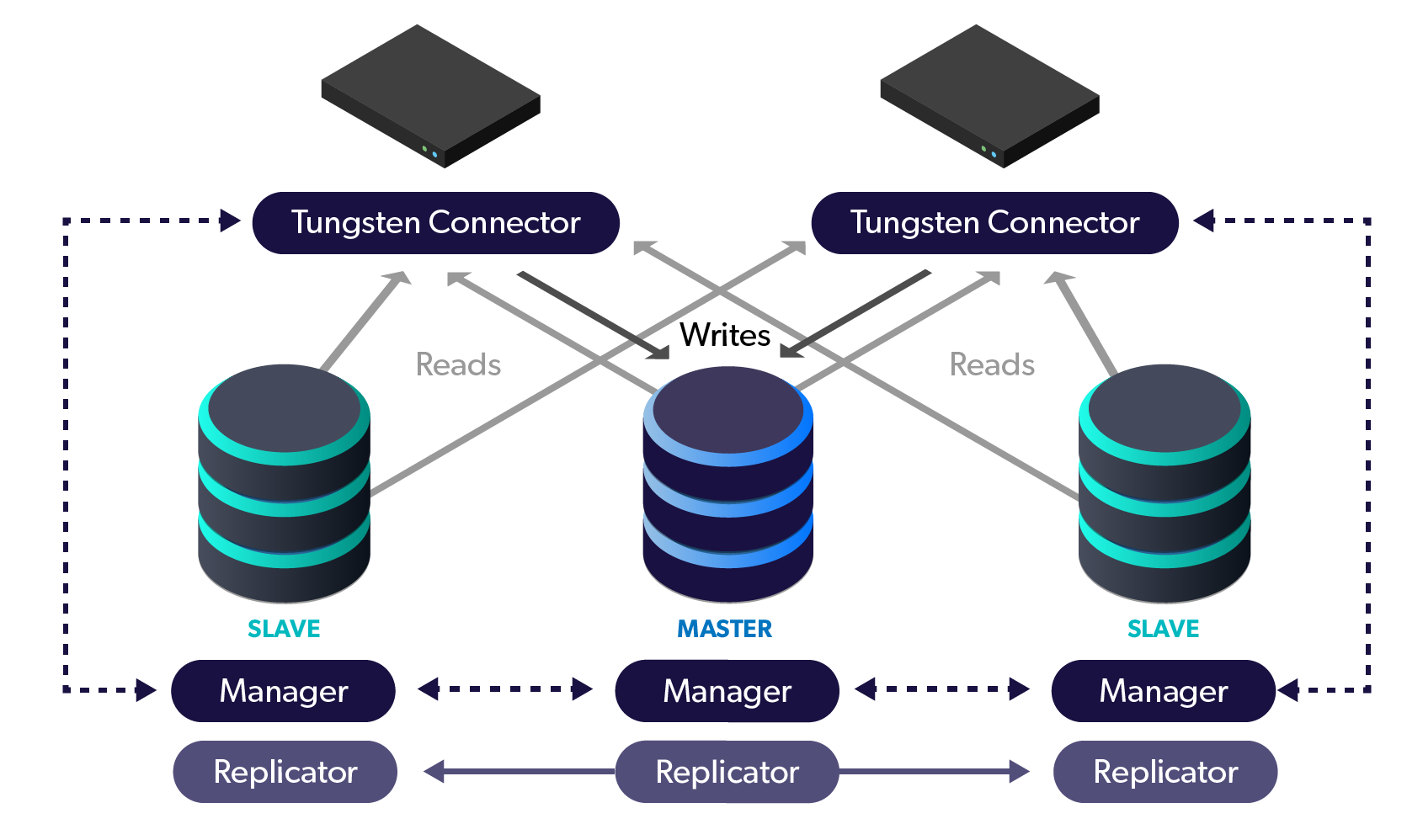
Overview
Continuent has traditionally had a relaxed policy about Linux platform support for customers using our products.
While it is possible to install and run Continuent Tungsten products (i.e. Cluster/Replicator/etc.) inside Docker containers, there are many reasons why this is not a good idea.
Background
As background, every database node in a Tungsten Cluster runs at least three (3) layers or services:
- MySQL Server (i.e. MySQL Community or Enterprise, MariaDB or Percona Server)
- Tungsten Manager, which handles health-checking, signaling and failover decisions (Java-based)
- Tungsten Replicator, which handles the movement of events from the MySQL master server binary logs to the slave databases nodes (Java-based)
Optionally, a fourth service, the Tungsten Connector (Java-based), may be installed as well, and often is.
The Current State of Affairs
As such, this means that the Docker container would also need to support these 3 or 4 layers and all the resources needed to run them.
This is not what containers were designed to do. In a proper containerized architecture, each container would contain one single layer of the operation, so there would be 3-4 containers per "node". This sort of architecture is best managed by some underlying technology like Swarm, Kubernetes, or Mesos.
More reasons to avoid using Docker containers with Continuent Tungsten solutions:
- Our product is designed to run on a full Linux OS. By design Docker does not have a full init system like SystemD, SysV init, Upstart, etc… This means that if we have a process (Replicator, Manager, Connector, etc…) that process will run as PID 1. If this process dies the container will die. There are some solutions that let a Docker container to have a ‘full init’ system so the container can start more processes like ssh, replicator, manager, … all at once. However this is almost a heavyweight VM kind of behavior, and Docker wasn’t designed this way.
- Requires a mutable container - to use Tungsten Clustering inside a Docker container, the Docker container must be launched as a mutable Linux instance, which is not the classic, nor proper way to use containers.
- Our services are not designed as “serverless”. Serverless containers are totally stateless. Tungsten Clustering does not support this type of operation.
- Until we make the necessary changes to our software, using Docker as a cluster node results in a minimum 1.2GB docker image.
- Once Tungsten Clustering has been refactored using a microservices-based architecture, it will be much easier to scale our solution using containers.
- A Docker container would need to allow for updates in order for the Tungsten Cluster software to be re-configured as needed. Otherwise, a new Docker container would need to be launched every time a config change was required.
- There are known i/o & resource constraints for Docker containers, and therefore must be carefully deployed to avoid those pitfalls.
- We test on CentOS-derived Linux platforms.
What to Expect in the Future
Continuent does NOT have Docker containerization on the product roadmap at this time. That being said, we do intend to provide containerization support at some point in the future. Customer demand will contribute to the timing of the effort.
Summary
In closing, Continuent’s position on container support is as follows:
- Unsupported at this time for all products (i.e. Cluster/Replicator/etc.)
- Use at your own risk
The Library
Please read the docs!
For the documentation page for this policy, please visit https://docs.continuent.com/tungsten-clustering-6.0/deployment-requirements.html#deployment-requirements-docker-policy
Tungsten Clustering is the most flexible, performant global database layer available today - use it underlying your SaaS offering as a strong base upon which to grow your worldwide business!
For more information, please visit https://www.continuent.com/solutions
Want to learn more or run a POC? Contact us.


Comments
Add new comment